Back to RoboPeter.com
So you work on a hay farm...
What is hay? Why do you make it? How to you "make hay"?
I get these questions alot so I figured I'd throw together a webpage giving a brief overview of haying and hopefully answer some of the questions about it!
What is hay?
Hay is a mixture of field grasses, including, Timothy, Blue Tip, Orchard Grass, and many others. Hay is not straw. Straw is the stalks of other grains, such as wheat. Straw is coarser and does not have the nutritional value of hay.
Why do you make it?
The next time you eat a hamburger thank us! Actually, most of the hay from the farm I work on goes to feeding horses on different people's farms. A good deal of it gets stored at the farm and deliveries are made to different places over the course of the year.
How do you "make hay"?
Making hay starts well before the summer. In the early spring manure and fertilizer is spread on the fields to add nutrients to the soil to allow the hay to grow better. The hay does not need to be planted, it grows naturally in New England.
Once the hay has grown tall and matured to the proper age (usually a week or two after Memorial Day) the hay is mowed down with a mower conditioner. (picture coming soon) The mower conditioner cuts the hay and then runs it between rollers to squish out what water it can.
The hay then needs to lie in the field until it dries. To speed up this process, the hay is Tedded. The Tedder (picture coming soon) flips the hay over and spreads it out so the sun can dry it as quickly as possible. Usually drying the hay takes about 2 days, but on bright sunny days it can be quicker and on cloudy days it can take much longer. This is the period of time where you really donít want the hay to get rained on, or it becomes dusty and not good for horses to eat (although cows and sheep will still eat it).
Once the hay is dry, it needs to be raked into rows (called windrows). That is done with a hay rake, pictured below attached to the tractor. The hay in the foreground is the hay after being tedded and in the background it has been raked.
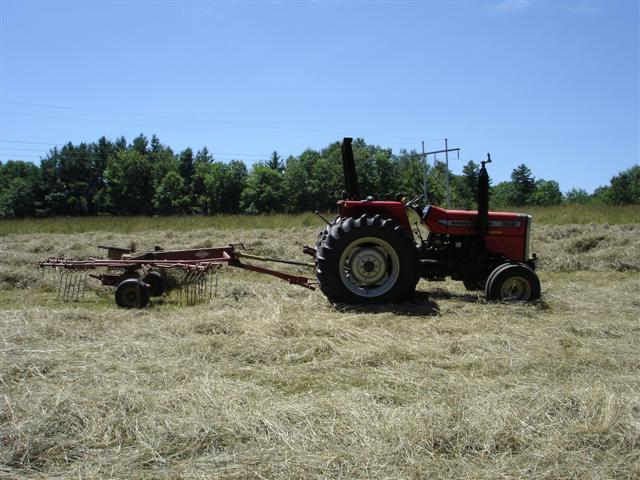
Below is the rake in action.
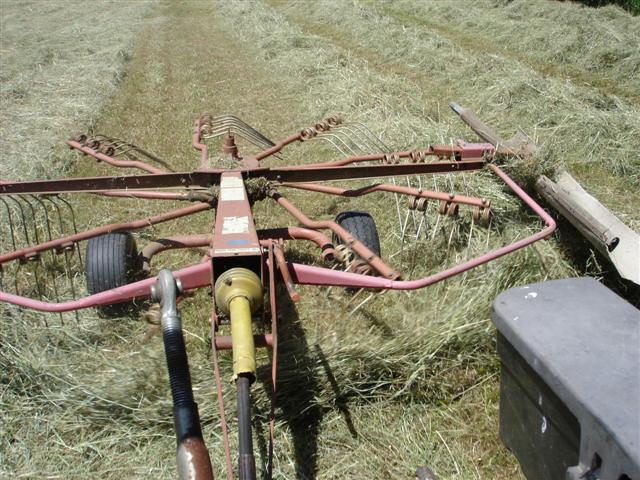
Below you can see the hay in the process of being raked. (The top of the field had been baled the day before)
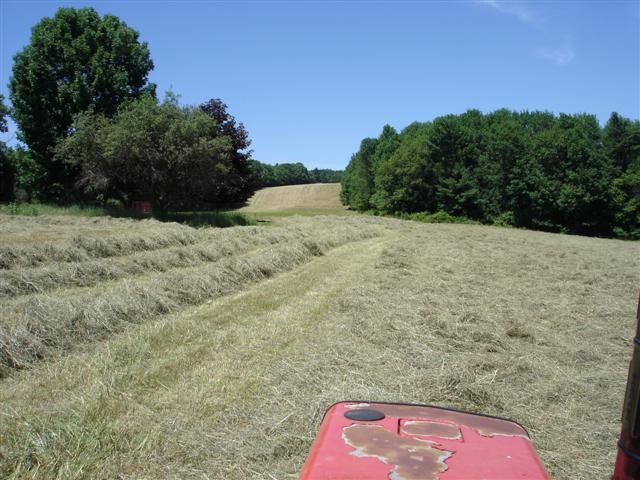
After the hay has been raked into rows, it is time to bale it. Bales are a convenient way of transporting and storing they hay. The bales we make are approximately 50 lbs and rectangular. The Tractor pulls a piece of equipment conveniently named the bailer, which scoops up the hay and squishes it into bales, and ties the bales with two lengths of twine, before launching them into a wagon being pulled behind the bailer. The bailer can be seen in action here, with a bale in mid flight into the wagon.
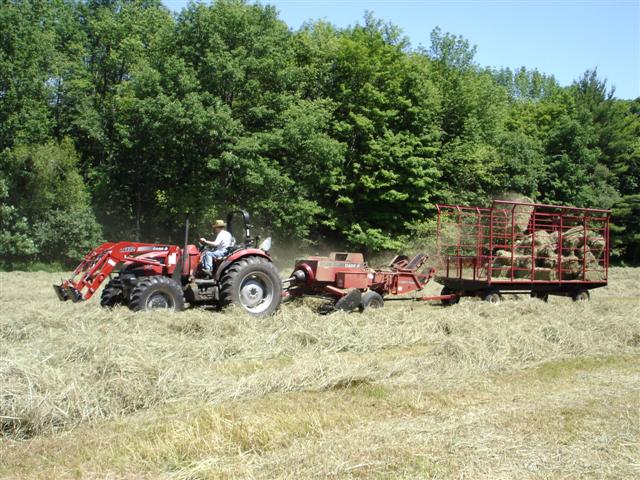
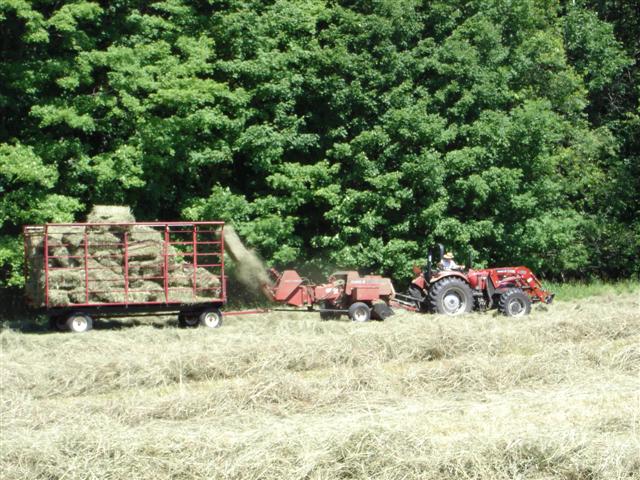
Once the wagon is full, it is switched out for an empty one and brought back to the barns for unloading. The hay is taken off the wagons and put on elevators which carry the bales into the barn. Once in the barn they are taken off and stacked for delivery and use throughout the year.
Hopefully as the season goes on I will be able to get more pictures of the rest of the process, but I hope this was informative!
--Peter




